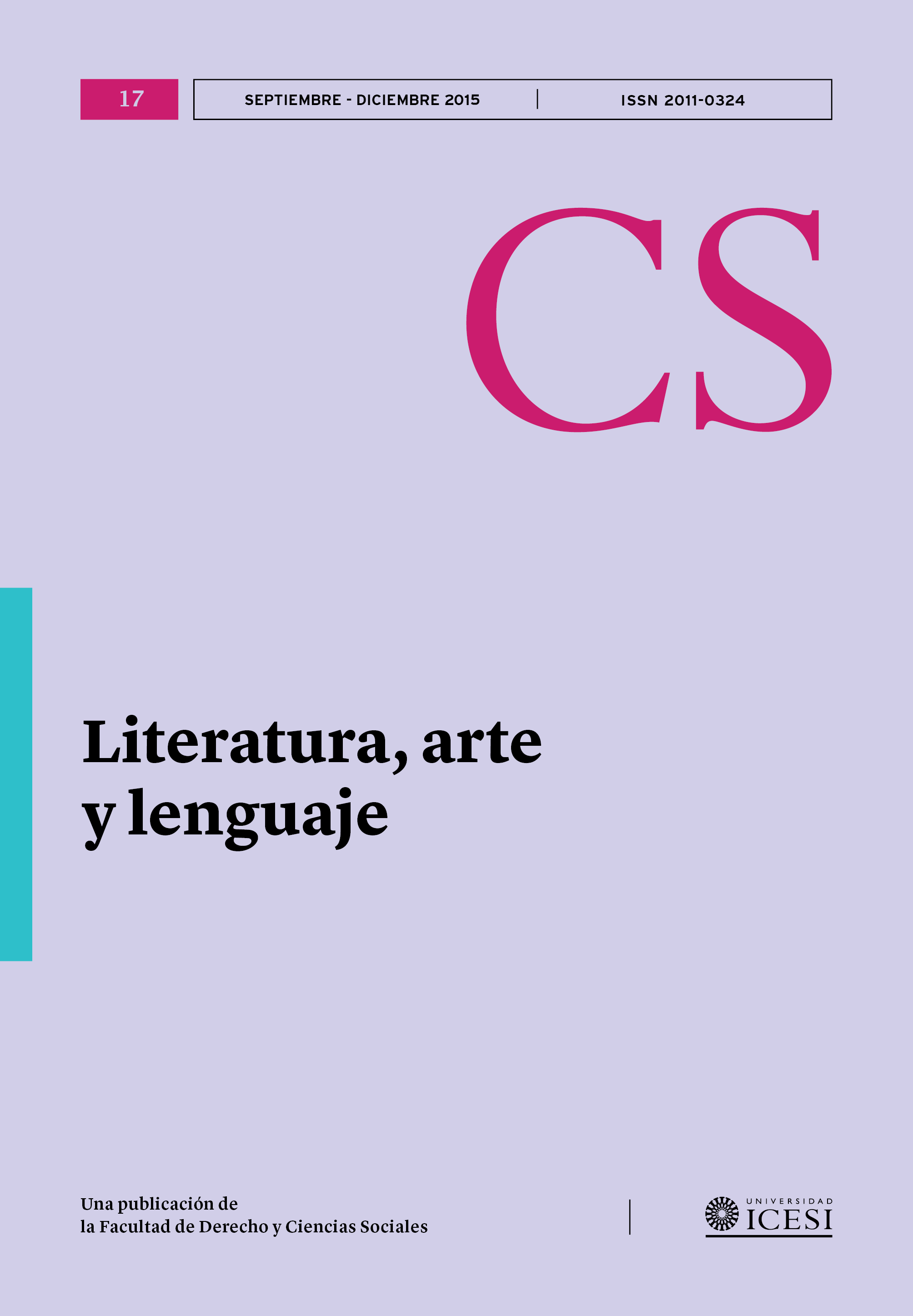Oficios sonoros: transformaciones en el ser impresor
DOI:
https://doi.org/10.18046/recs.i17.2036Palabras clave:
Oficio, Sonido, Experiencia, Artes gráficas, MáquinasResumen
El estudio del oficio del impresor pasa, entre otras muchas cosas, por una observación reflexiva de cómo las distintas técnicas de impresión presentes desde el siglo XIX, han configurado las formas de ejercer el oficio, de relacionarse con el espacio, de interactuar con la máquina, y de ser impresor. Este artículo explora, mediante ejercicios etnográficos con impresores en el Barrio San Nicolás en Cali, cómo la introducción de nuevas técnicas de impresión ha transformado la manera de ejercer el oficio, tomando como punto de partida la relación hombre-máquina y los cambios en el paisaje sonoro de las imprentas.Descargas
Referencias
Alonso, M. (2003). El entorno sonoro. Un ensayo sobre el estudio del sonido medioambiental. http://www.ccapitalia.net/reso/articulos/entorno_sonoro/entorno_sonoro.htm
Alonso, M. (2005). Sonido y sociabilidad: consistencia bioacústica en espacios públicos. En Espacios sonoros, tecnopolítica y vida cotidiana. Aproximaciones a una antropología sonora. Barcelona, España: Orquesta del Caos.
Alonso, M. (2010). Etnografía sonora. Reflexiones prácticas. Sárasuati, (4), pp. pp. 26-33.
Alonso, M. (2011). Socioacústica y etnografía urbana. Reflexiones en torno al caso de la Parte Alta de Tarragona. Arxiu d'Etnografia de Catalunya, (11), pp. 51-76.
Augoyard, J.F., Torgue H. (Ed.). (2005). Sonic Exprecience: A Guide to Everyday Sounds. Quebec, Canada: McGill-Queen’s University Press.
Brenneis, D. y Feld, S. (2004). Doing anthropology in sound. American Ethnologist, 31 (4), pp. 461-474.
Feld, S. (1987). Dialogic Editing: Interpreting How Kaluli Read Sound and Sentiment. Cultural Anthropology, 2 (2), pp. 190-210
Feld, S. (1990). Sound and Sentiment: Birds, Weeping, Poetics and Song in Kaluli Expression. Durham, USA: Duke University Press.
Feld, S. (1996). Waterfalls of Song: An acoustemology of Place Resounding in Bosavi, Papua New Guinea. En Feld, S. y Basso, K. (Ed), Senses of Place, pp. 91-135. Santa F, USA: School of American Research Press.
Helmreich, S. (2007). An Anthropologist underwater: immersive soundscapes, submarine cyborgs, and transductive ethnography. American Ethnologist, 34 (4), pp. 621-641.
Ingold, T. (2002). The perception of the environment. Essays on livelihood, dwelling and skill. Routledge.
Jackson, M. (1996). Things as they are. New directions in phenomenological anthropology. Indianapolis, USA: Indiana University Press.
Llorca, J. (2014). Decibelios, experiencia y (re)presentación. Derivas metodológicas hacia el estudio del paisaje sonoro. Revista Chilena de Antropología Visual, (23), pp. 166-191.
Merriam, A. (1964). The Anthropology of Music. Evanston, USA: Northwestern University Press.
Merriam, A. (1967). Ethnomusicology of the Flathead Indians. Chicago, USA: Aldine.
Rice, T. (2003). Soundselves, An acoustemology of sound and self in the Edinburgh Royal Infirmary. Anthropology Today, 19 (4), pp. 4-9.
Rice, T. (2008). “Beautiful murmurs”: Stethoscopic listening and acoustic objectification. Senses & Society, 3 (3), pp. 293-306.
Samuels, D., Meintjes, L., Ochoa, A. y Porcello, T. (2010). Soundscapes: Toward a Sounded Anthropology. Annual Review of Anthropology, 39, pp. 329-345.
Schaeffer, P. (1994). Our Sonic Enviroment and the Soundscape. The Tuning of the World. Rochester, USA: Destiny Books.
Schaeffer, P. (2003). Tratado de los objetos musicales. Madrid, España: Alianza Editorial.
Sullivan, L. (1986). Sound and Senses: Toward a Hermeneutics of Performance. History of Religion. 26 (1), pp. 1–33.
Turnbull, C. (1961). The Forest People. New York, USA: Simon and Schuster.
Publicado
Número
Sección
Licencia
Derechos de autor 2015 Ana Garay

Esta obra está bajo una licencia internacional Creative Commons Atribución-NoComercial 4.0.
© Derechos reservados de autor
El material de esta publicación puede ser reproducido sin autorización, siempre y cuando se cite el título, el autor y la fuente institucional.
El contenido publicado en Revista CS se distribuye bajo la licencia Creative Commons BY-NC 4.0 Atribución/Reconocimiento-NoComercial 4.0 Internacional.
Usted es libre de:
Compartir — copiar y redistribuir el material en cualquier medio o formato.
Adaptar — remezclar, transformar y construir a partir del material.
Bajo los siguientes términos:
Atribución — Usted debe dar crédito de manera adecuada, brindar un enlace a la licencia, e indicar si se han realizado cambios. Puede hacerlo en cualquier forma razonable, pero no de forma tal que sugiera que usted o su uso tienen el apoyo de la licenciante.
NoComercial — Usted no puede hacer uso del material con propósitos comerciales.












